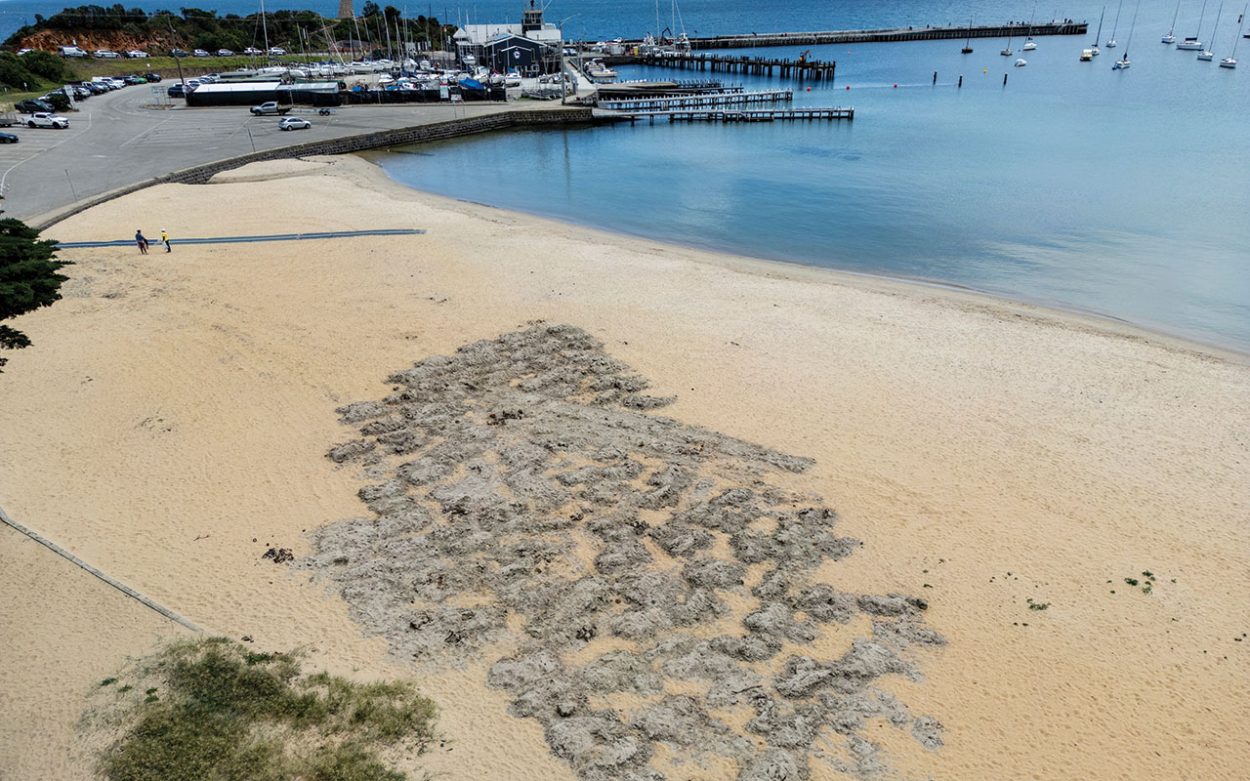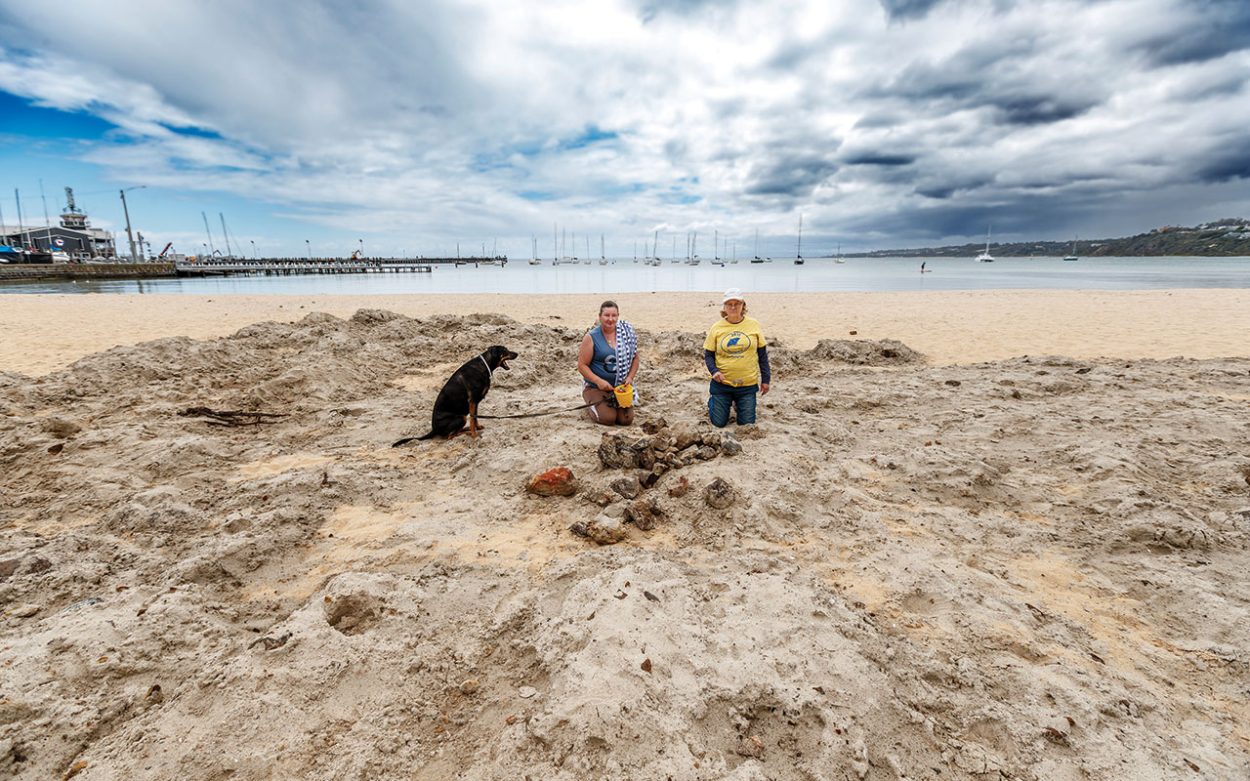
RESIDENTS have expressed concerns following piles of dredging spoil being deposited on Mothers Beach following routine works at the Mornington boat ramp last week.
The Mornington Peninsula Shire conducts regular dredging at the boat ramp to address sand buildup which interferes with vehicle and human access.
This year, the dredged sediment was spread on Mothers Beach, which some locals say occurred without adequate consultation or warning and has interfered with the visual appeal of the beach.
A member of Beach Patrol 3931, Susan Young, said the spoil was “visually polluting” and expressed concern regarding how close the busy summer season is.
“It just looks absolutely revolting,” Young said.
“From my personal perspective, it’s the visual aspect. This beach is an iconic beach in Mornington. We have a clean-up event on the first week of December and if that pile is still there, it doesn’t say much for how we treat our citizens and how we appreciate our assets.”
She said she doesn’t believe locals were adequately warned prior to the spoils being placed on the beach.
“I don’t believe there was any public consultation or warning or signs or anything like that about it before it happened,” Young said.
“We just have to trust that the sludge is not contaminated and not going to pose a health hazard to beach goers.”
Mornington resident Melanie Bird has spent more than a year monitoring regeneration of native vegetation on the beach and said she was concerned about the impact of the spoil on fragile vegetation.
“Over time, without the mechanical rakes and tractor driving over Mothers Beach, the vegetation was able to regrow in a natural kind of way because it wasn’t being disturbed,” Bird said.
“I find it absolutely appalling that those new little native seedlings were not only buried under this pile of contaminated sand, but they were also uprooted by the bobcat used to move the sand across the beach.”
Bird said she collected samples which left residue on her hand and smelled of fuel which left her concerned about potential contamination. She has sent samples off to be professionally tested after a home test kit showed differences between the control sample and the spoil sample.
“I don’t have a problem with them having to clean the boat ramp,” Bird said.
“It’s just they put it on an area that they were well and truly aware was being revegetated.”
A spokesperson from Environment Protection Authority Victoria confirmed officers inspected the dredged sediment and said it was consistent with routine annual maintenance.
“EPA has been provided with the results of scientific testing that confirms the sediment is suitable for spreading on the nearby beach,” the spokesperson said.
According to EPA, any dark colour or odour is normal for organic material dredged from the bay and “can be expected to dissipate with the effects of rain and exposure to sunlight”.
The spokesperson said members of the public can report concerns via EPA’s 24-hour hotline or online.
A shire spokesperson said the project involved removing sand build-up obstructing access to the boat ramp and that depositing clean sand onto the nearest beach is “established best practice and recommended by Parks Victoria”.
“We’ve tested the dredged sand and it’s clean and uncontaminated,” the spokesperson said.
“The colour is due to harmless organic matter that will break down naturally within a few days.”
The shire said explanatory signage was installed once the sand had been levelled.
Bird questioned the consistency of the shire’s practices. “I cannot logically understand why the debris collected by the raking of the beach is disposed of as contaminated waste at a significant cost to ratepayers – while this sludge is being dumped right in the middle of one of our most beautiful beaches,” Bird said.
Residents are calling for clearer public notification, greater care for regenerating habitat, and more consideration of the visual impact dredging spoil can have on the peninsula’s beaches.
First published in the Mornington News – 25 November 2025



